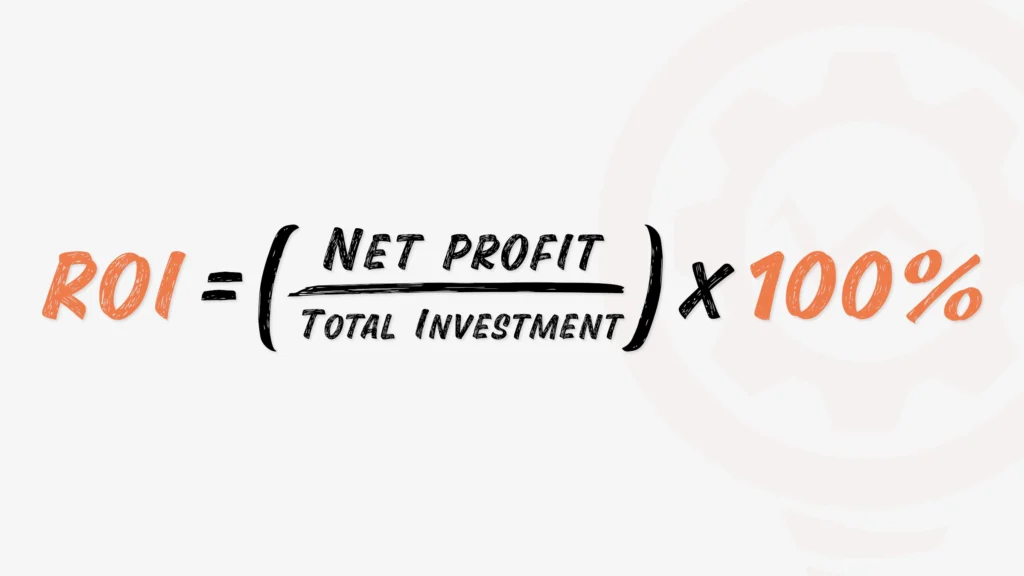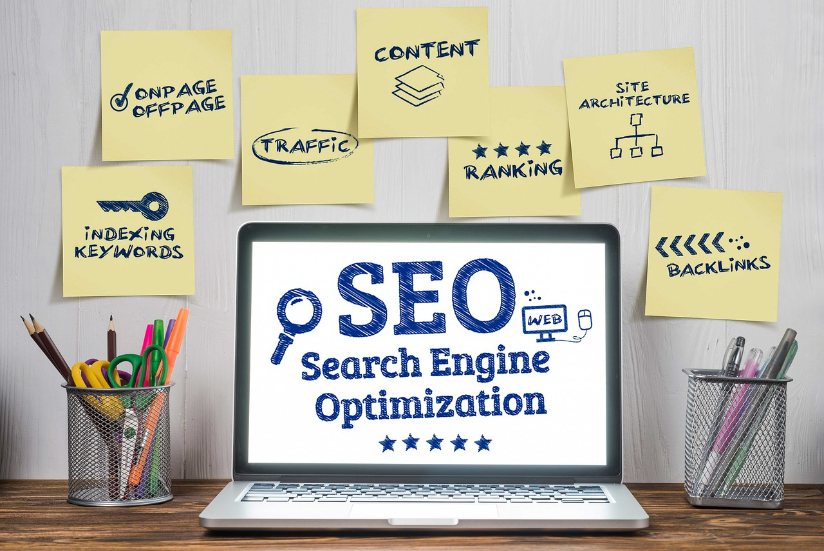
Welcome to the first part of our three-part series on How to Maximize Marketing Returns: Tracking ROI and ROAS for Your Business. Throughout this series, we will conduct an insightful exploration of the fundamental metrics of Return on Investment (ROI) and Return on Advertising Spend (ROAS), which are essential for evaluating marketing effectiveness and improving profitability.
Part One: Understanding ROI and Its Implications
In this initial phase, we will introduce the concept of ROI, its meaning, and how it can be calculated. We’ll explore illustrative examples of ROI in marketing to provide practical insights into its application. Understanding ROI is foundational to making informed decisions about resource allocation and optimizing marketing strategies for maximum returns.
Part Two: Demystifying ROAS and Its Calculation
Moving forward, our focus will shift to demystifying Return on Advertising Spend (ROAS), a pivotal metric in the digital marketing landscape. We’ll elucidate what ROAS entails, how it differs from ROI, and offer clear guidelines for calculating it accurately. Practical scenarios will be presented to facilitate a deeper understanding of ROAS and its application in evaluating advertising campaign performance.
Part Three: Contrasting ROI and ROAS
Finally, we will compare and contrast ROI and ROAS, providing nuanced insights into their respective roles and relevance. By examining their distinct characteristics, strengths, and limitations, you’ll gain a comprehensive understanding of how to leverage these metrics to drive strategic marketing decisions and achieve sustainable growth.
The Importance of ROI and ROAS in Digital Marketing
At the heart of every marketing endeavor lies a fundamental question: Is our investment yielding returns? ROI, often regarded as the holy grail of marketing metrics, provides a comprehensive answer to this query. It measures the financial gains or losses relative to the investment made, offering invaluable insights into the effectiveness of marketing campaigns, channels, and initiatives.
Defining ROI and ROAS
Before we go any further, it’s important to demystify these terms. ROI, an acronym for Return on Investment, represents the ratio of net profit to the initial investment. On the other hand, ROAS, or Return on Advertising Spend, focuses specifically on the returns generated from advertising expenditures. Both metrics serve as barometers of marketing efficiency, guiding businesses in optimizing their resource allocation and driving sustainable growth.
Why Understanding These Metrics Matters for Your Business
In today’s hypercompetitive digital landscape, informed decision-making is everything. Whether you’re a budding startup seeking to establish your online presence or a seasoned enterprise aiming to refine your marketing strategies, grasping the nuances of ROI and ROAS can spell the difference between stagnation and success. By harnessing the power of these metrics, businesses can fine-tune their campaigns, allocate resources wisely, and ultimately, amplify their bottom line.
As we begin this journey to understand the complexities of ROI and ROAS, be prepared to uncover actionable insights, real-world examples, and strategies to optimize your marketing efforts. Together, let’s navigate the maze of digital marketing metrics and emerge with newfound clarity and confidence in driving tangible results for your business.
Understanding ROI (Return on Investment)
What Does ROI Stand For?
ROI stands for Return on Investment, serves as a pivotal metric in assessing the profitability and effectiveness of marketing endeavors. Essentially, ROI quantifies the return generated from an investment relative to its cost. It provides a standardized framework for evaluating the success of marketing campaigns, initiatives, and channels, enabling businesses to make data-driven decisions and optimize resource allocation.
How to Calculate ROI?
At its core, ROI can be calculated as:

Here, “Net Profit” is the revenue generated from the investment, minus any associated costs or expenses. “Total Investment” includes all expenses related to the marketing effort, including but not limited to advertising costs, campaign management fees, and overhead expenses. Multiplying the ratio of net profit to total investment by 100 converts it into a percentage, providing a standardized measure of ROI. This percentage serves as a benchmark for evaluating the investment’s efficiency and profitability.
Interpreting ROI results involves understanding the context of the calculated figure. A positive ROI indicates that the investment generated more revenue than it cost, signifying profitability. Conversely, a negative ROI suggests that the investment incurred greater expenses than the revenue it generated, highlighting potential inefficiencies or losses.
Moreover, ROI is not merely a static figure but rather a dynamic metric that evolves over time. By continuously tracking ROI and analyzing it across various marketing initiatives and channels, businesses can identify high-performing strategies, reallocate resources to maximize returns, and refine their overall marketing approach.
In the following sections, we’ll take a closer look at real-life examples of ROI in marketing, benchmark what constitutes good ROI, and explore the role of ROI in different marketing channels. Through comprehensive insights and practical guidance, we’ll equip you with the tools and knowledge needed to harness the power of ROI and drive sustainable growth for your business.
Benchmarking: What Is a Good ROI?
Determining what constitutes a good ROI can vary depending on factors such as industry, business goals, and investment timelines. However, several benchmarks can provide a general framework for evaluating ROI:
- Industry Standards: Researching industry-specific benchmarks can offer insights into typical ROI ranges for various marketing channels. Comparing your ROI against industry averages can help contextualize your performance and identify areas for improvement.
- Historical Performance: Analyzing past ROI data enables businesses to establish benchmarks based on their own performance history. Tracking ROI trends over time facilitates goal-setting and performance evaluation, guiding future investment decisions.
- Business Objectives: Aligning ROI benchmarks with overarching business objectives is crucial. A “good” ROI should contribute to achieving specific business goals, whether it’s increasing revenue, expanding market share, or improving brand awareness.
- Risk Considerations: Assessing the risk associated with marketing investments is essential when evaluating ROI. Investments with higher risk profiles may warrant lower ROI thresholds, while lower-risk investments may justify higher ROI expectations.
By leveraging these benchmarks, businesses can gauge the effectiveness of their marketing efforts, set realistic ROI targets, and optimize their strategies to maximize returns.

What Is ROI in Marketing?
In today’s diverse digital landscape, businesses have a wide variety of marketing channels at their disposal. As we go through these channels, we’ll explore their respective ROI implications, shedding light on the significance of marketing ROI. Along the way, we’ll address fundamental questions like ‘What is ROI in marketing?’ to provide a comprehensive understanding of how businesses can measure and optimize their marketing investments.
Social Media ROI
Social media platforms offer unparalleled opportunities for engagement, brand building, and lead generation. Assessing ROI in social media marketing involves tracking metrics such as engagement rates, click-through rates, and conversions. By analyzing the relationship between social media investments and revenue generated, businesses can quantify the ROI of their social media efforts.
Here’s a simple example illustrating how social media ROI can be assessed.
Let’s consider a small business, ABC Clothing, that invests $1,000 per month in social media marketing campaigns across platforms like Facebook, Instagram, and X. Over the course of one month, they track the following metrics:
- Revenue: Total revenue generated from social media marketing campaigns: $2,500
- Cost: Total cost of social media marketing campaigns: $1,000
Now, let’s calculate ROI:
ROI = (Revenue generated – Cost of investment) / Cost of investment x 100
= ($2,500 – $1,000) / $1,000 x 100
= 150%
So, in this revised example, ABC Clothing achieved a 150% ROI from their social media marketing efforts. This means that for every dollar invested in social media marketing, they earned $1.50 in revenue, considering all costs associated with the marketing efforts.
The total cost of a social media marketing campaign encompasses various expenses associated with planning, executing, and managing the campaign. Here are some components that could be included in the total cost:
- Ad Spend: The amount paid to social media platforms for running ads, including sponsored posts, promoted tweets, and boosted content.
- Content Creation: The cost of creating visual assets, such as images, videos, and graphics, as well as written content for posts and advertisements.
- Creative Services: Fees paid to graphic designers, videographers, copywriters, and other creative professionals involved in developing campaign content.
- Tools and Software: Subscription fees for social media management tools, analytics platforms, and other software used to plan, schedule, and analyze social media posts and campaigns.
- Agency Fees: If the business hires a social media marketing agency to manage their campaigns, the agency’s service fees would be included in the total cost.
- Promotional Costs: Expenses related to running contests, giveaways, or other promotional activities on social media platforms.
- Influencer Collaborations: Payments made to social media influencers for sponsored posts or partnerships promoting the business’s products or services.
- Employee Salaries: The portion of employee salaries or wages allocated to tasks related to social media marketing, such as content creation, community management, and campaign monitoring.
- Overhead Costs: Indirect expenses associated with running social media marketing campaigns, such as office rent, utilities, and administrative costs.
- Miscellaneous Expenses: Any other costs incurred specifically for the social media marketing campaign, such as travel expenses for attending events or sponsoring local activities.
By including all these components in the total cost of the social media marketing campaign, businesses can accurately assess the return on investment (ROI) of their efforts and make informed decisions about resource allocation and campaign optimization.

SEO ROI
Search Engine Optimization (SEO) plays a critical role in driving organic traffic to websites and enhancing online visibility. Calculating SEO ROI involves evaluating factors such as organic traffic growth, keyword rankings, and conversion rates. Businesses can measure the ROI of their SEO initiatives by assessing the impact on website traffic, lead generation, and ultimately, revenue generation.
Let’s consider a small business, XYZ Tech Solutions, that invests $2,000 per month in SEO efforts to improve their website’s search engine rankings and organic traffic. Over the course of one month, they track the following metrics:
- Revenue: Total revenue generated from organic traffic-driven conversions: $10,000
- Cost: Total cost of SEO efforts: $2,000
Now, let’s calculate ROI:
ROI = (Revenue generated – Cost of investment) / Cost of investment x 100
= ($10,000 – $2,000) / $2,000 x 100
= 400%
So, in this example, XYZ Tech Solutions achieved a 400% ROI from their SEO efforts. This means that for every dollar invested in SEO, they earned $4 in revenue.
For SEO, the investment encompasses various expenses related to optimizing a website for better search engine visibility and organic traffic. Here are some components that could be considered as an investment for SEO:
- SEO Audit and Strategy Development: Costs associated with hiring an SEO consultant or agency to conduct an initial audit of the website’s SEO health, identify areas for improvement, and develop a comprehensive SEO strategy.
- On-Page Optimization: Expenses related to optimizing website content, meta tags, headings, URLs, and internal linking structure to make them more search engine friendly.
- Off-Page Optimization: Costs incurred for link building activities such as guest blogging, directory submissions, influencer outreach, and social media promotion to increase the website’s authority and credibility.
- Content Creation and Optimization: Investment in creating high-quality, relevant, and optimized content for the website, including blog posts, articles, infographics, videos, and other multimedia assets.
- Technical SEO: Expenditure on technical improvements to the website, such as fixing crawl errors, optimizing site speed, implementing schema markup, and improving mobile-friendliness, to enhance user experience and search engine visibility.
- Keyword Research: Costs associated with conducting keyword research to identify relevant and high-traffic keywords for targeting in content optimization and link building efforts.
- SEO Tools and Software: Subscription fees for SEO tools and software used for keyword research, rank tracking, backlink analysis, website audits, and performance monitoring.
- Website Development and Design: Expenses related to redesigning or restructuring the website to make it more SEO-friendly, including implementing responsive design, improving site architecture, and enhancing user experience.
- Training and Education: Investment in training programs, workshops, courses, and certifications for employees or team members responsible for implementing SEO strategies and techniques.
- Consulting Fees and Agency Services: Payments made to SEO consultants, freelancers, or agencies for ongoing SEO management, monitoring, and optimization services.
By considering these components as part of the investment for SEO, businesses can accurately assess the return on investment (ROI) of their SEO efforts and make informed decisions about resource allocation and strategy optimization.

Email Marketing ROI
Email marketing remains a cornerstone of digital marketing strategies, offering a direct and cost-effective means of communication with customers. Evaluating email marketing ROI entails tracking metrics such as open rates, click-through rates, and conversion rates. By analyzing the relationship between email marketing investments and revenue generated from campaigns, businesses can gauge the effectiveness of their email marketing efforts.
Let’s look at an example that illustrates how to assess Email ROI:
Imagine a small business named “ABC Electronics” that invests $500 per month in their email marketing campaigns to promote their latest products and special offers. Over the course of one month, they track the following metrics:
- Email Campaign Performance:
- Total emails sent: 5,000
- Open rate: 20%
- Click-through rate (CTR): 10%
- Conversion rate: 5%
- Conversions:
- Number of purchases attributed to email marketing: 50
Based on this data, ABC Electronics calculates the following metrics:
- Revenue generated from email marketing:
- Total conversions x Average revenue per conversion
- 50 conversions x $100 = $5,000
- Total Cost of Email Marketing:
- Monthly investment in email marketing: $500
Now, let’s calculate ROI:
ROI = (Revenue generated – Cost of investment) / Cost of investment x 100
= ($5,000 – $500) / $500 x 100
= 900%
So, in this example, ABC Electronics achieved a 900% ROI from their email marketing efforts. This means that for every dollar invested in email marketing, they earned $9 in revenue.
The monthly investment in email marketing includes various expenses incurred in planning, executing, and managing email campaigns. Here are some components that could be included in the monthly investment:
- Email Marketing Platform Fees: Subscription costs for using email marketing software or platforms such as Mailchimp, Brevo, SendGrid, or HubSpot, etc.
- Email List Management: Costs associated with managing and maintaining email lists, including list segmentation, cleaning, and GDPR compliance.
- Email Template Design: Expenses for designing or customizing email templates for different campaigns, newsletters, or automated emails.
- Content Creation: Costs related to creating compelling email content, including copywriting, graphic design, and multimedia production.
- Email Deliverability Services: Fees for email deliverability services or tools that help improve inbox placement rates and prevent emails from being marked as spam.
- Email Automation: Costs associated with setting up and managing automated email workflows, drip campaigns, and triggered emails.
- A/B Testing Tools: Subscription fees for A/B testing tools that enable testing different email subject lines, content variations, and call-to-action buttons to optimize campaign performance.
- Analytics and Reporting: Expenses for tracking and analyzing email campaign metrics, including open rates, click-through rates, conversion rates, and revenue attribution.
- Email Compliance and Legal Costs: Fees for legal consultation or compliance services related to email marketing regulations such as GDPR, CAN-SPAM Act, and CASL.
- Integration and CRM Fees: Costs for integrating email marketing software with customer relationship management (CRM) systems or other marketing platforms to streamline data management and segmentation.
- Staffing and Labor: The portion of employee salaries or wages allocated to tasks related to email marketing, such as campaign management, content creation, and analysis.
By including these components in the monthly investment in email marketing, businesses can accurately assess the return on investment (ROI) of their email marketing efforts and make informed decisions about resource allocation and campaign optimization.
Influencer Marketing ROI
Influencer marketing leverages the credibility and reach of social media influencers to promote products or services. Assessing ROI in influencer marketing involves measuring metrics such as engagement, reach, and conversion rates attributed to influencer collaborations. By evaluating the impact of influencer partnerships on brand awareness, customer acquisition, and sales, businesses can determine the ROI of their influencer marketing campaigns.
Let’s illustrate how Influencer Marketing ROI can be assessed:
Consider a startup named “XYZ Cosmetics” that collaborates with an influencer on Instagram to promote their new line of skincare products. They invest $1,000 in this influencer partnership for a sponsored post and a series of Instagram Stories. Over the campaign period, they track the following metrics:
- Number of purchases attributed to the influencer collaboration: 50
- Total revenue generated from influencer marketing collaborations: $2,500
- Total cost of the influencer partnership: $1,000
Now, let’s calculate ROI:
ROI = (Revenue generated – Cost of investment) / Cost of investment x 100
= ($2,500 – $1,000) / $1,000 x 100
= 150%
So, in this example, XYZ Cosmetics achieved a 150% ROI from their influencer marketing campaign. This means that for every dollar invested in influencer marketing, they earned $1.50 in revenue.

The investment for influencer marketing encompasses various expenses associated with collaborating with influencers to promote products or services. Here are some components that could be included in the investment for influencer marketing:
- Influencer Fees: Payments made to influencers for their services, including sponsored posts, product reviews, shoutouts, and social media mentions. These fees can vary based on the influencer’s reach, engagement, niche, and level of influence.
- Product or Service Samples: Costs associated with providing free products, services, or experiences to influencers for them to review, endorse, or feature in their content.
- Contractual Agreements: Legal fees or expenses related to drafting and negotiating contracts, agreements, or terms of collaboration with influencers, including payment terms, deliverables, exclusivity clauses, and usage rights.
- Influencer Outreach and Management: Costs incurred for identifying, contacting, and managing relationships with influencers, including research, outreach emails, communication, and relationship management tools or platforms.
- Content Creation and Production: Expenses for creating high-quality content for influencer marketing campaigns, including photography, videography, graphic design, and editing services.
- Campaign Strategy and Planning: Investment in developing strategic influencer marketing campaigns, including campaign ideation, planning, goal setting, audience targeting, and content strategy development.
- Tracking and Analytics: Costs for tracking and analyzing influencer marketing campaign performance, including monitoring metrics such as reach, engagement, clicks, conversions, and return on investment.
- Influencer Events or Activations: Expenditure on organizing or sponsoring events, meetups, or brand activations involving influencers to create authentic and immersive brand experiences.
- Affiliate Commissions or Performance-Based Payments: Additional payments or commissions offered to influencers based on performance metrics such as sales, leads, or conversions generated through their promotion efforts.
- Influencer Gifting and Incentives: Expenses for offering gifts, incentives, or perks to influencers as a token of appreciation or motivation for their collaboration, loyalty, or ongoing partnership.
By considering these components as part of the investment for influencer marketing, businesses can accurately assess the return on investment (ROI) of their influencer marketing efforts and make informed decisions about resource allocation and campaign optimization.
PPC ROI
Pay-Per-Click (PPC) advertising allows businesses to target specific audiences and pay solely for clicks on their ads. Calculating PPC ROI entails analyzing metrics like click-through rates, conversion rates, and cost per acquisition. By evaluating the correlation between PPC investments and revenue generated from ad campaigns, businesses can determine the ROI of their PPC advertising efforts.
Let’s delve into an example illustrating how PPC ROI can be assessed:
Imagine a small business named “ABC Fitness Gear” that invests $1,500 per month in PPC advertising campaigns to promote their range of fitness equipment. Over the course of one month, they track the following metrics:
- Conversions:
- Number of purchases attributed to PPC ads: 100
- Revenue:
- Total revenue generated from PPC advertising: $3,000
- Cost:
- Total cost of PPC advertising campaigns: $1,500
Now, let’s calculate ROI:
ROI = (Revenue generated – Cost of investment) / Cost of investment x 100
= ($3,000 – $1,500) / $1,500 x 100
= 100%
So, in this example, ABC Fitness Gear achieved a 100% ROI from their PPC advertising efforts. This means that for every dollar invested in PPC advertising, they earned $1 in revenue.

When calculating the investment for advertising, it’s essential to consider all the expenses associated with planning, executing, and managing advertising campaigns across various channels. Here are some components that could be included in the investment for advertising:
- Ad Spend: The primary component of advertising investment is the amount spent on purchasing ad placements across different platforms such as Google Ads, Facebook Ads, Instagram Ads, LinkedIn Ads, display networks, and other digital or traditional media channels.
- Creative Production Costs: Expenses related to creating advertising materials, including graphic design, copywriting, video production, photography, and other creative assets used in ad campaigns.
- Ad Placement Fees: Costs associated with placing ads on specific websites, publications, or media channels, including sponsored content, native advertising, display ads, search ads, social media ads, and other paid promotional placements.
- Ad Management Fees: Fees paid to advertising agencies, consultants, or platforms for managing and optimizing ad campaigns, including campaign setup, monitoring, optimization, and performance tracking services.
- Ad Testing Costs: Expenses for conducting A/B testing or multivariate testing to optimize ad performance, including testing different ad creatives, targeting options, ad formats, messaging, and landing pages.
- Ad Tech and Tools: Subscription fees or costs associated with using ad management platforms, analytics tools, bid management software, or other advertising technology solutions to improve campaign effectiveness, efficiency, and ROI.
- Campaign Tracking and Analytics: Expenses for tracking and analyzing advertising campaign performance, including metrics such as impressions, clicks, conversions, cost per acquisition (CPA), return on ad spend (ROAS), and overall ROI.
- Advertising Research and Strategy: Costs associated with market research, audience segmentation, competitive analysis, and strategic planning to develop effective advertising campaigns and messaging that resonates with target audiences.
- Advertising Personnel and Labor: The portion of employee salaries or wages allocated to tasks related to advertising, including campaign management, creative production, media planning, ad buying, analytics, and reporting.
- Advertising Platforms and Partnerships: Fees or costs associated with partnering with advertising platforms, publishers, influencers, affiliates, or media networks to reach target audiences and promote products or services.
By including these components in the investment for advertising, businesses can accurately assess the total cost of their advertising efforts and make informed decisions about budget allocation, campaign optimization, and resource allocation to maximize ROI.
Partner with Shtrack – Your ROI-Driven Marketing Agency
In conclusion, comprehending, monitoring, and evaluating ROI stand as pivotal stages for enterprises aiming to optimize their marketing efficacy. At Shtrack, we specialize in crafting marketing strategies that prioritize ROI, ensuring measurable returns on investment. As a results-oriented agency, we are dedicated to delivering quantifiable results for your marketing endeavors. If you’re in search of a long-term partner to enhance your marketing initiatives and achieve tangible outcomes, we invite you to schedule a meeting with us. Let’s explore how Shtrack can align with your marketing objectives and drive your business forward.
15 minutes with our experts.

Enjoyed the article?
Elevate your business with our expert insights. Subscribe for valuable tips that make a difference!